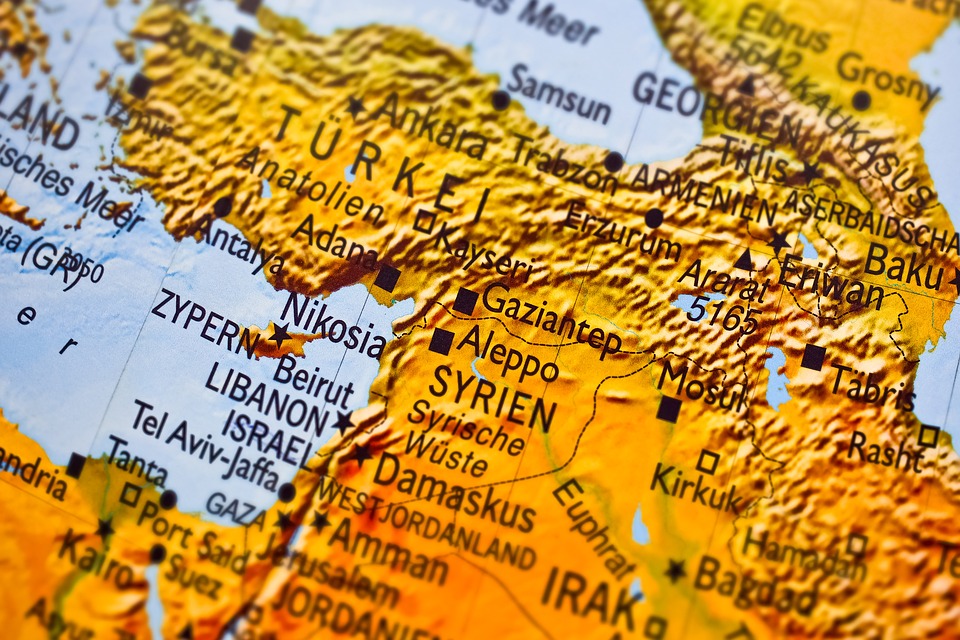Washington Kurdish Institute
By Giulia Valeria Anderson
23 August 2019
After many discussions and negotiations, on August 22nd both Turkey and the United States agreed on creating a ‘safe zone’, bordering northern Syria and Turkey. Initially, Turkish President Recep Tayyip Erdoğan, modeled his plan on the no-fly zone northern Iraq had in place after the Gulf War. However, as negotiations took a further step, his plan muted into a ‘safe zone’. The United States tried to counter balance Erdoğan’s decision by proposing a 10-kilometer zone. Instead, an area of 30 to 40 kilometers was agreed on, as a result of the most recent negotiation.
The area, which will include Kobane, a city which has always had a vast majority of Kurds, has been proposed in order to protect Syrian refugees and Kurdish Syrians, fleeing from the war. The safe zone will serve as a ‘peace corridor’, U.S. Officials stated. However, few details have been provided. There is no information on when the zone will be established, nor how the Turkish government intends to move all Kurdish refugees to the safe zone. The only information that has been told so far, is that the Turks have begun to monitor the area with drones, and that the creation of the safe zone will begin from the Euphrates.
How will the safe zone affect the Kurds?
The area chosen for the safe zone is mostly inhabited by Kurds. The city of Kobane, part of the autonomous Rojava(West part of greater Kurdistan), as well as the center of operations for the Kurdish militias fighting Daesh (or ISIS), are also designated to be within the chosen territory. It is important to underline that the Kurdish militias fighting in those areas, also known as the People’s Protection Unit (YPG), operate in coordination with the Syrian Democratic Forces (SDF). Both groups have the United States’ support and have been an important ally in the fight against the Islamic State. However, President Erdoğan firmly believes the YPG militias are tied with the Kurdistan Worker’s Party (PKK), considered as a terrorist organization, even if fighting for the independence of Kurdistan since the 1980s. Erdoğan has always been against the United States’ cooperation with the SDF and YPG, despite their efforts against Deash and despite both countries being NATO allies. Nonetheless, all these Kurdish areas have been selected for the safe zones.
Notwithstanding, one may believe this safe zone is just another effort, by the Turkish Government, in order to defeat the YPG, their tunnels and fortifications. Plus, the creation of this safe zone will force thousands of Kurds to flee from those territories, causing a humanitarian crisis and, in the worst case-scenarios, an increase of conflict. Ankara believes the YPG, allied with the PKK, is using those areas as headquarters for future attacks against Turkey. However, as of today, there is no proof of this theory. Indeed, one may consider this choice as an extension of the Turkish dispute vis-à-vis the Kurds.
Recently, the Kurds have been of extreme importance for the United States, as also in the past. In 1975, the Kurds helped Iran and the United States weaken the Ba’ath Regime in Iraq. In 1991, again the Kurds followed President George H.W. Bush’s request to revolt against Saddam Hussein. Today, the Kurds are acting as the ‘boots on the ground’ for the United States and their Western allies, in their fight against Daesh in Syria. However, this does not justify the fact that the Kurds are often left aside. The Kurds feel as if they have been frequently betrayed by foreign countries and are skeptical this could happen again.
This safe zone will not only weaken the Kurds and force them to flee, it will also destroy the United States’ efforts pursued so far in Syria – though keeping in mind Washington’s recent decision to withdraw from Syria. The United States’ has partnered with the SDF and YPG in order to avoid the resurgence of Deash, even if it is still active. What Kurdish militias have done in Syria is incomparable to all Western-pursued actions in the region. They have managed to free at least one third of Syria from terrorists, allowing the population to enjoy a partial moment of peace and stability. The safe zone could, in the worst case-scenarios, cause imbalances within the country, especially with Syria’s President Bashar Al-Assad, and bring to the consolidation of Daesh once again.
Historically, safe zones are considered as demilitarized and neutral areas. However, there is no information on who will control these areas, if they will be neutral, and if Turkey will use them as their home-base for their military operations in Syria. The Syrian Government has announced its complete disapproval against the safe zone, considering it as illegal, and a violation of its sovereignty. As for the Kurds, they have expressed their sympathy towards this move, as it will help those internally displaced and the 700.00 Kurdish refugees in Turkey. They have not, however, accepted Turkey’s ‘implicit’ decision of wanting to destroy what they have created so far. Though ‘implicit’ may be an understatement, given that Ankara has more than once threatened to whip out the Kurds, and just recently on August 6th the current Foreign Minister of Turkey, Mevlüt Çavuşoğlu, repeated it.
The Syrian Kurds, thanks to their proven stability, have a chance to improve the development of their community by helping the reconstruction of it. Imposing a safe zone that will stand against Syria’s sovereignty and cause further clashes with the central government, if not the resurgence of Deash, is not, as of today, the right answer. The international community needs to reflect whether it is appropriate to cast aside its most reliable ally in the region.
Disclaimer: The views, opinions, and positions expressed by authors and contributors do not necessary reflect those of the WKI.

